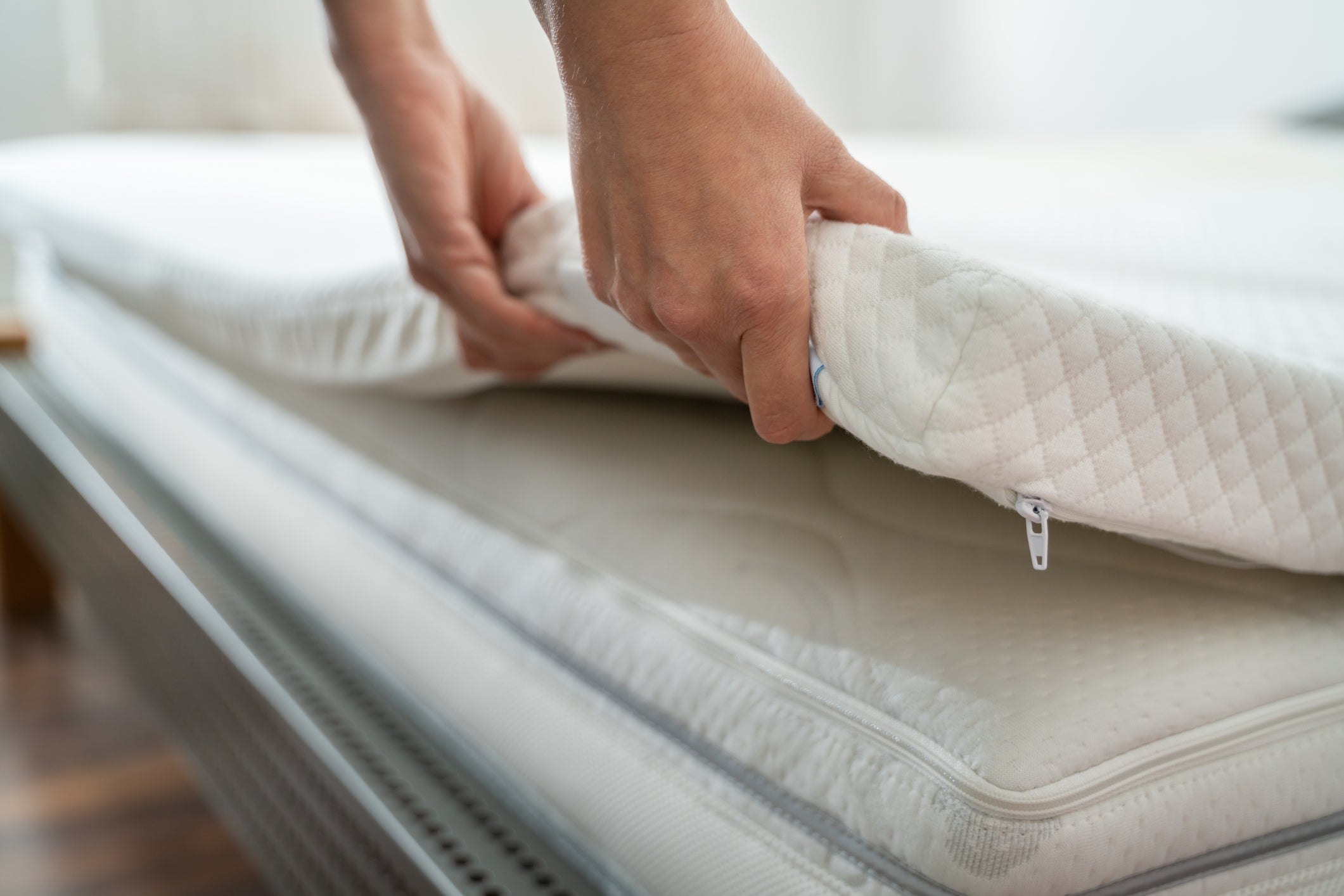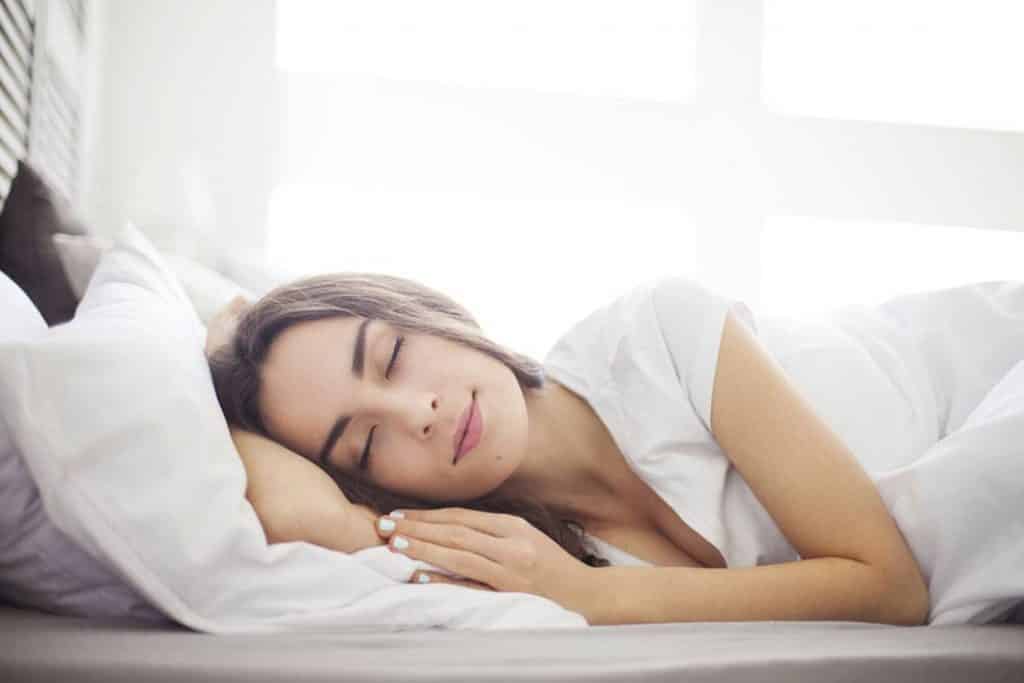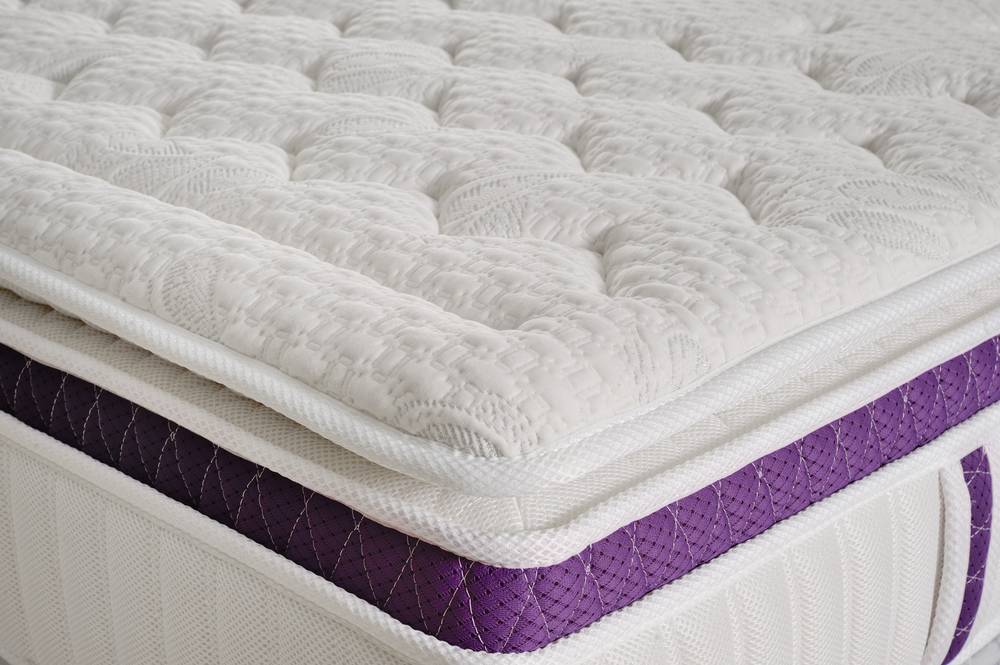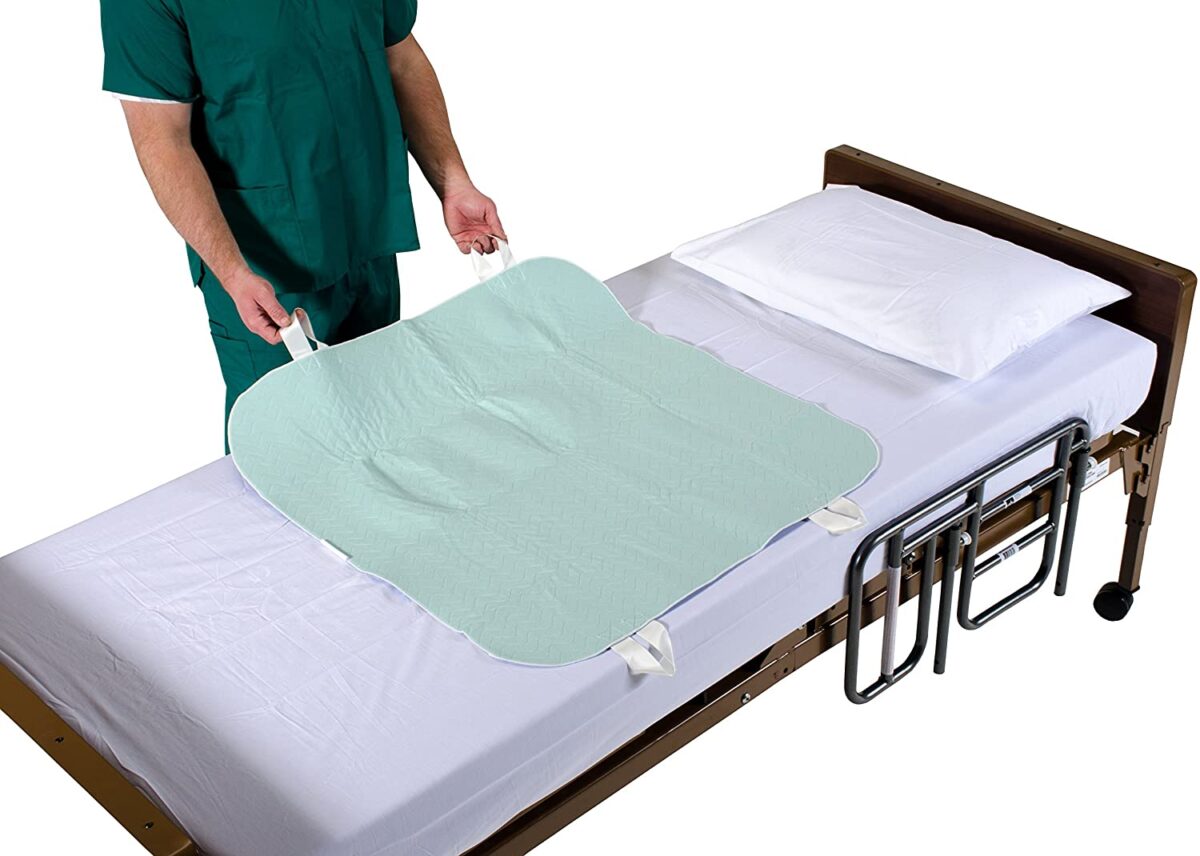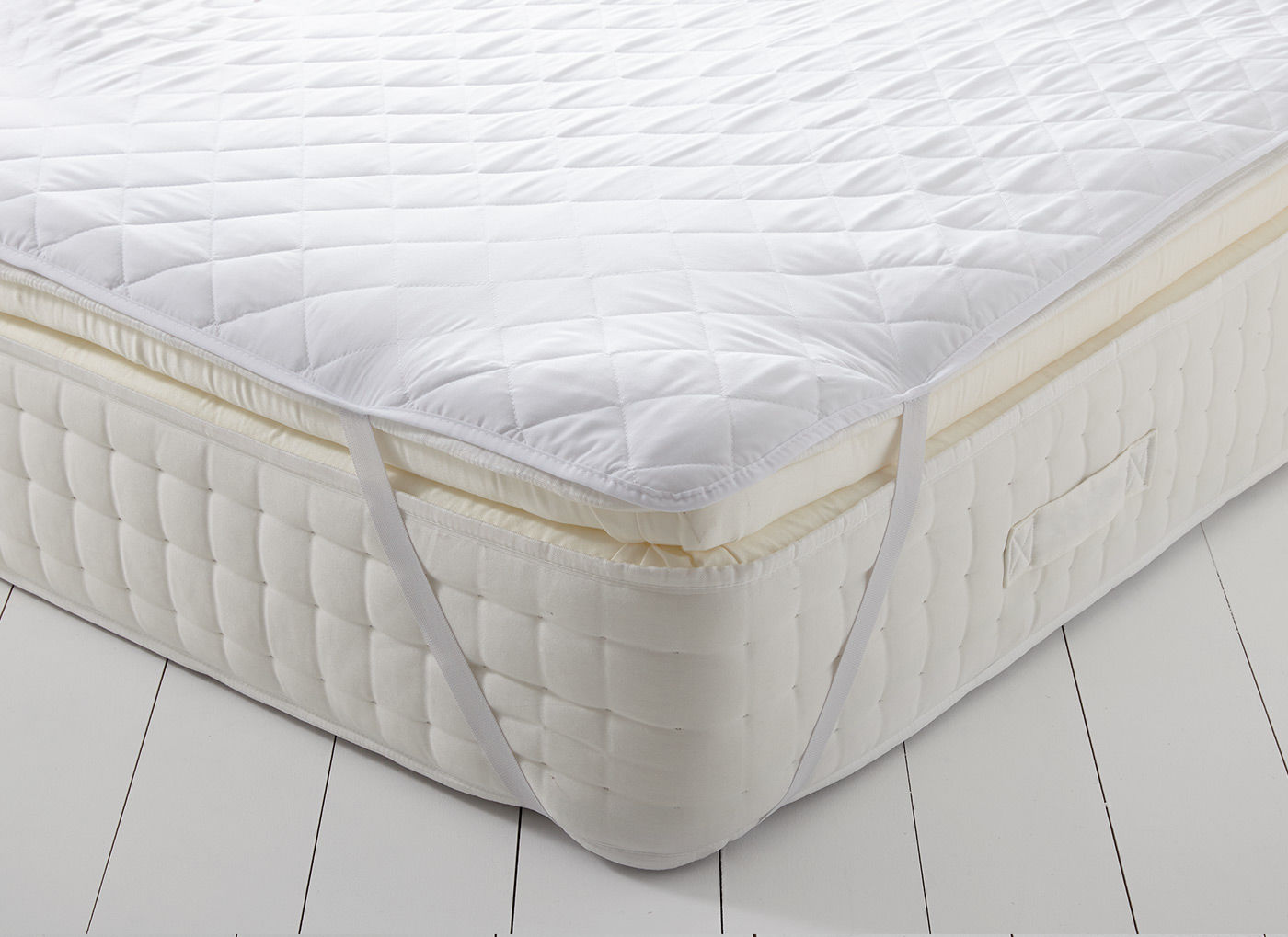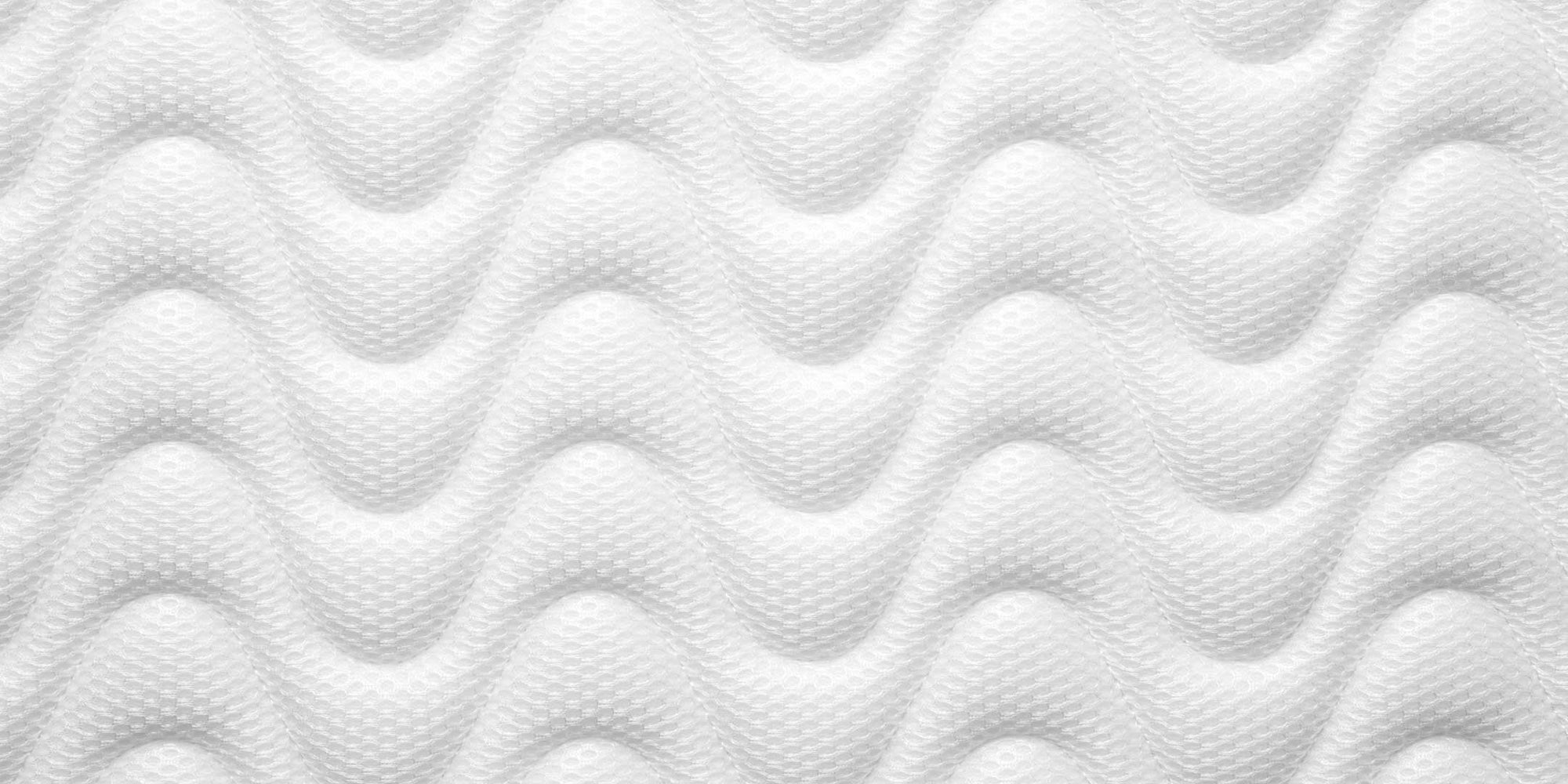1. Mattress Pad vs Mattress Protector: What's the Difference?
When it comes to protecting your mattress, there are two main options: mattress pads and mattress protectors. While they may seem similar, these two bedding essentials serve different purposes.
A mattress pad is a thin layer of cushioning that is placed on top of your mattress for added comfort. It can also serve as a barrier between your sheets and the mattress, helping to protect it from spills and stains.
On the other hand, a mattress protector is a thin, waterproof layer that goes directly on top of your mattress to protect it from spills, stains, and even bed bugs. It is usually made of a plastic or vinyl material and is designed to be easily removed and washed.
So, what's the difference? While both provide some level of protection for your mattress, they serve different purposes. A mattress pad is primarily for added comfort, while a mattress protector is for protection against spills and stains. However, some mattress pads may also offer some level of protection, making it a versatile choice for your bed.
2. How to Choose the Right Mattress Pad for Your Bed
With so many options available, it can be overwhelming to choose the right mattress pad for your bed. Here are some factors to consider when making your decision:
Material: Mattress pads can be made from a variety of materials, such as cotton, down, polyester, and memory foam. Consider your personal preferences and needs when choosing the material. For example, if you tend to sleep hot, a cotton or bamboo mattress pad may be more breathable. For those with allergies, a hypoallergenic material like down alternative may be a better option.
Thickness: Mattress pads come in various thickness levels, from thin to thick. Thicker pads may provide more cushioning and comfort, but they may also affect the overall feel of your mattress. Consider the level of support and comfort you want when choosing the thickness of your mattress pad.
Fit: Make sure to choose a mattress pad that is the correct size for your mattress. It should fit snugly and not move around during the night. Some mattress pads come with elastic straps or a skirt to keep them in place.
Features: Some mattress pads come with additional features, such as cooling technology, waterproofing, or hypoallergenic properties. Consider any specific needs you may have when choosing a mattress pad with these added features.
3. The Benefits of Using a Mattress Pad Over a Mattress Protector
While both serve different purposes, there are several benefits to using a mattress pad over a mattress protector:
Added Comfort: A mattress pad can provide an extra layer of comfort for your mattress, making it feel softer and more comfortable to sleep on. This is especially beneficial for those with older or firmer mattresses.
Protection Against Stains: While a mattress protector is designed to protect against spills and stains, a mattress pad can also provide some level of protection. This is especially useful for those with children or pets who may accidentally spill something on the bed.
Easy to Clean: Mattress pads are typically machine washable, making them easy to clean and maintain. This is especially convenient for those with allergies or for those who want to keep their bedding clean and fresh.
Added Layer for Allergy Protection: Some mattress pads are made with hypoallergenic materials, providing an extra layer of protection against allergens like dust mites and pet dander.
Cost-effective: Mattress pads are generally more affordable than mattress protectors, making them a cost-effective option for adding comfort and protection to your bed.
4. Top 10 Best Mattress Pads for Added Comfort and Protection
Looking for the best mattress pad for your bed? Here are our top 10 picks:
1. Ultra Plush Mattress Pad: This mattress pad is made with a soft, hypoallergenic microfiber material and has a plush, cushiony feel for added comfort.
2. Waterproof Mattress Pad: Protect your mattress from spills and stains with this waterproof mattress pad, made with a soft, breathable fabric.
3. Memory Foam Mattress Pad: Add an extra layer of support to your mattress with this memory foam mattress pad that conforms to your body for added comfort.
4. Down Alternative Mattress Pad: For those who prefer a softer, more luxurious feel, this down alternative mattress pad is a great option.
5. Bamboo Mattress Pad: Made with bamboo fibers, this mattress pad is not only soft and comfortable, but it also has cooling properties to help regulate your body temperature while you sleep.
6. Gel-infused Mattress Pad: This mattress pad is infused with cooling gel to help regulate your body temperature and provide extra support for a comfortable night's sleep.
7. Hypoallergenic Mattress Pad: Those with allergies will appreciate the hypoallergenic properties of this mattress pad, which provides an extra layer of protection against allergens.
8. Deep Pocket Mattress Pad: If you have a thicker mattress, this deep pocket mattress pad is designed to fit snugly and provide added comfort and protection.
9. Organic Cotton Mattress Pad: Made with 100% organic cotton, this mattress pad is a great option for those who prefer natural materials and have sensitive skin.
10. Heated Mattress Pad: For those cold winter nights, this heated mattress pad provides extra warmth and comfort to help you sleep better.
5. Mattress Pad vs Mattress Topper: Which One is Right for You?
Mattress pads and mattress toppers are often used interchangeably, but they serve different purposes. While a mattress pad is primarily for added comfort and protection, a mattress topper is designed to provide additional support and can change the feel of your mattress.
If you have a mattress that is too firm or uncomfortable, a mattress topper can be a great solution to make it more comfortable. However, if you're looking to add an extra layer of cushioning or protection to your mattress, a mattress pad is the way to go.
6. How to Properly Care for Your Mattress Pad and Mattress Protector
Both your mattress pad and mattress protector should be cleaned regularly to ensure they continue to provide comfort and protection for your mattress. Here are some tips for proper care and maintenance:
Washing Instructions: Most mattress pads and protectors are machine washable. However, make sure to check the label for specific washing instructions. Avoid using hot water, harsh detergents, and fabric softeners, which can damage the waterproof layer.
Drying: Both mattress pads and protectors should be air-dried or dried on a low heat setting. High heat can damage the waterproof layer and cause shrinkage.
Frequency: It's recommended to wash your mattress pad and protector every 1-2 months, or more often if you have spills or accidents.
Replacing: Depending on the quality and care of your mattress pad and protector, they may need to be replaced every 1-2 years. Signs that it's time for a replacement include visible wear and tear, loss of waterproofing, and decreased comfort.
7. The Importance of Using a Mattress Pad Over a Mattress Protector for Allergy Sufferers
If you suffer from allergies, using a mattress pad over a mattress protector can provide an extra layer of protection against allergens. Mattress pads can be made with hypoallergenic materials and can help prevent dust mites, pet dander, and other allergens from reaching your mattress. Additionally, regularly washing your mattress pad can help remove any allergens that may have accumulated.
8. Mattress Pad vs Mattress Encasement: What's the Difference?
While a mattress pad and a mattress encasement may seem similar, they serve different purposes. A mattress encasement is a protective cover that goes around your entire mattress, providing a barrier against bed bugs, dust mites, and other allergens. It is typically made of a thicker, more durable material, while a mattress pad is thinner and primarily for added comfort and protection. Consider your specific needs when choosing between a mattress pad and encasement.
9. The Best Mattress Pads for Hot Sleepers
If you tend to sleep hot, choosing the right mattress pad can help keep you cool and comfortable throughout the night. Look for materials like cotton, bamboo, or gel-infused memory foam, which are known for their cooling properties. Additionally, consider the thickness of the mattress pad, as a thinner pad may allow for better air circulation.
10. How to Layer Your Bedding: Mattress Pad, Mattress Protector, and Sheets
Now that you have all the essential bedding components for a comfortable and protected mattress, here's how to properly layer them:
1. Start with your fitted sheet, followed by the mattress pad.
2. Place the mattress protector on top of the mattress pad.
3. Add your flat sheet on top of the protector.
4. Finish with your comforter or duvet and any additional pillows or blankets.
By layering your bedding in this order, you can ensure your mattress is protected from spills and stains while also providing added comfort for a good night's sleep.
In conclusion, choosing a mattress pad over a mattress protector offers numerous benefits, including added comfort, protection, and versatility. With the right mattress pad, you can enhance the overall feel of your mattress while also keeping it clean and protected. So, consider these factors and our top picks when choosing the perfect mattress pad for your bed.
The Benefits of Using a Mattress Pad Over a Mattress Protector
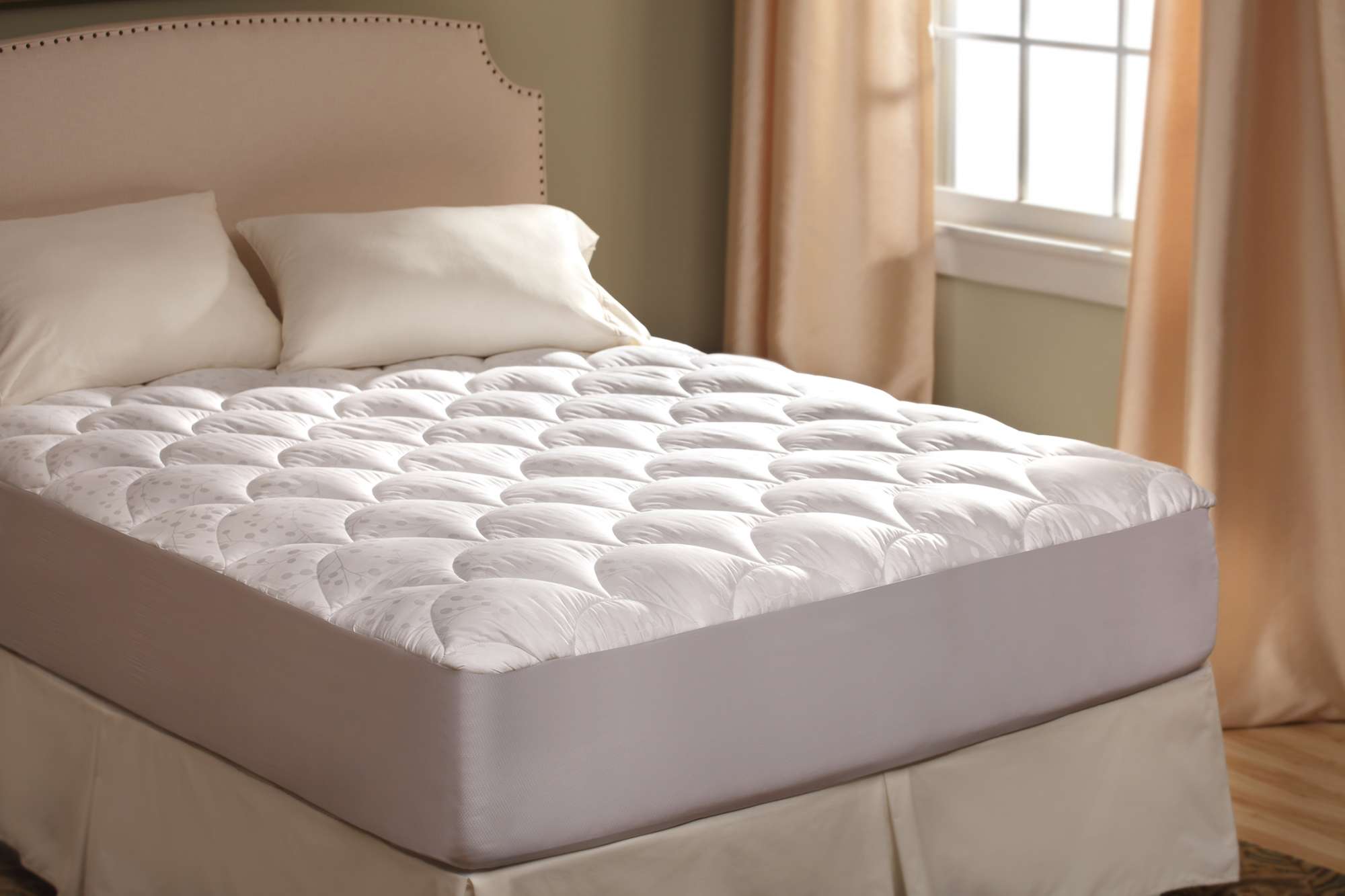
Protecting Your Mattress Investment
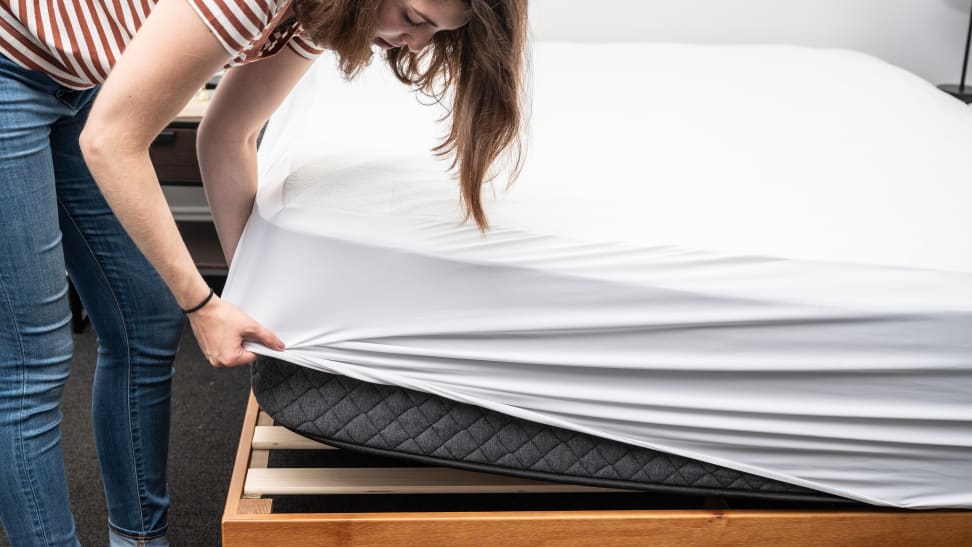 When it comes to protecting your mattress, there are a few options available on the market. The two most common choices are
mattress pads
and
mattress protectors
. While both serve the purpose of keeping your mattress clean and extending its lifespan, there are key differences between the two. In this article, we will focus on the benefits of using a
mattress pad
over a
mattress protector
, and why it may be the better choice for your overall house design.
When it comes to protecting your mattress, there are a few options available on the market. The two most common choices are
mattress pads
and
mattress protectors
. While both serve the purpose of keeping your mattress clean and extending its lifespan, there are key differences between the two. In this article, we will focus on the benefits of using a
mattress pad
over a
mattress protector
, and why it may be the better choice for your overall house design.
Added Comfort
 One of the main reasons people choose to use a
mattress pad
over a
mattress protector
is for the added comfort. A
mattress pad
is typically made of a thicker, quilted material that provides an extra layer of cushioning on top of your mattress. This can be especially beneficial for older mattresses or those that are on the firmer side. The extra padding can help alleviate pressure points and provide a more comfortable sleeping experience.
Adding a mattress pad
to your bed can also give it a more luxurious and inviting look, enhancing the overall design of your bedroom.
One of the main reasons people choose to use a
mattress pad
over a
mattress protector
is for the added comfort. A
mattress pad
is typically made of a thicker, quilted material that provides an extra layer of cushioning on top of your mattress. This can be especially beneficial for older mattresses or those that are on the firmer side. The extra padding can help alleviate pressure points and provide a more comfortable sleeping experience.
Adding a mattress pad
to your bed can also give it a more luxurious and inviting look, enhancing the overall design of your bedroom.
Improved Breathability
 Another advantage of using a
mattress pad
is that it can improve the breathability of your mattress. Most
mattress protectors
are made of waterproof materials, which can trap heat and make sleeping uncomfortable.
Mattress pads
, on the other hand, are designed to be more breathable, allowing air to circulate and regulate body temperature while you sleep. This can be especially beneficial for those who tend to sleep hot or live in warmer climates.
Another advantage of using a
mattress pad
is that it can improve the breathability of your mattress. Most
mattress protectors
are made of waterproof materials, which can trap heat and make sleeping uncomfortable.
Mattress pads
, on the other hand, are designed to be more breathable, allowing air to circulate and regulate body temperature while you sleep. This can be especially beneficial for those who tend to sleep hot or live in warmer climates.
Easy to Clean and Maintain
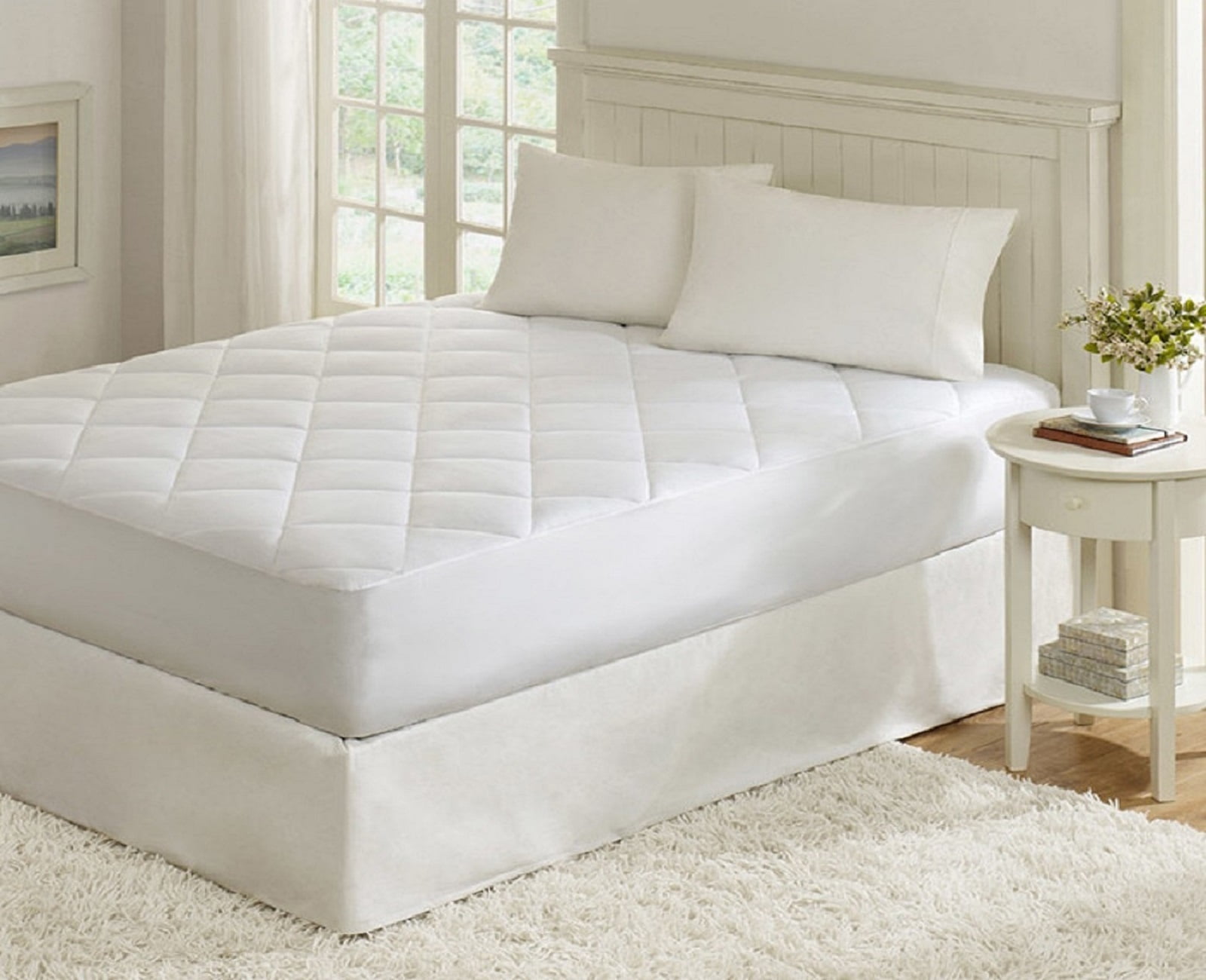 One of the biggest complaints about
mattress protectors
is that they can be difficult to clean, especially if they are waterproof. Some may even require professional cleaning to remove stains and odors.
Mattress pads
, on the other hand, are much easier to clean and maintain. Most are machine washable and can be tossed in with your regular laundry. This makes them a more practical choice for busy households and can save you time and money in the long run.
One of the biggest complaints about
mattress protectors
is that they can be difficult to clean, especially if they are waterproof. Some may even require professional cleaning to remove stains and odors.
Mattress pads
, on the other hand, are much easier to clean and maintain. Most are machine washable and can be tossed in with your regular laundry. This makes them a more practical choice for busy households and can save you time and money in the long run.
Enhancing Your House Design
 Aside from the practical benefits, a
mattress pad
can also enhance the overall design of your bedroom. With a variety of styles and patterns available, you can easily find a
mattress pad
that complements your existing bedding and decor. This small addition can make a big impact on the overall aesthetic of your bedroom and tie the room's design together.
In conclusion, while both
mattress pads
and
mattress protectors
serve the purpose of protecting your mattress, a
mattress pad
offers added comfort, breathability, and ease of maintenance. It also has the added benefit of enhancing your house design. So, when it comes to choosing between the two, consider the factors mentioned above and decide which option is best for your particular needs and preferences.
Aside from the practical benefits, a
mattress pad
can also enhance the overall design of your bedroom. With a variety of styles and patterns available, you can easily find a
mattress pad
that complements your existing bedding and decor. This small addition can make a big impact on the overall aesthetic of your bedroom and tie the room's design together.
In conclusion, while both
mattress pads
and
mattress protectors
serve the purpose of protecting your mattress, a
mattress pad
offers added comfort, breathability, and ease of maintenance. It also has the added benefit of enhancing your house design. So, when it comes to choosing between the two, consider the factors mentioned above and decide which option is best for your particular needs and preferences.
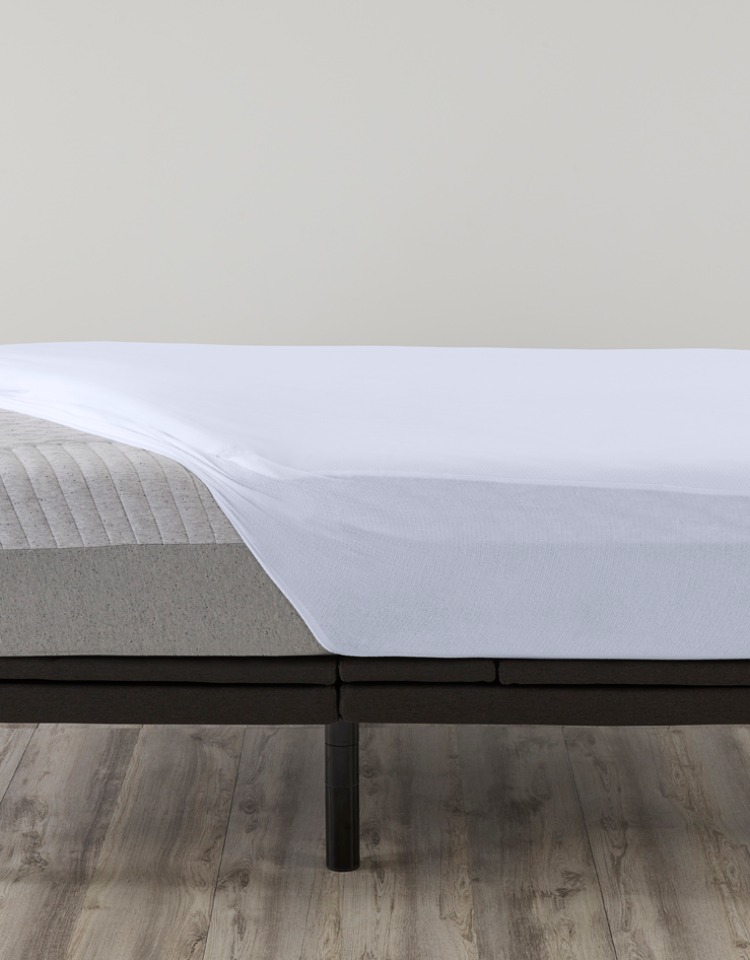


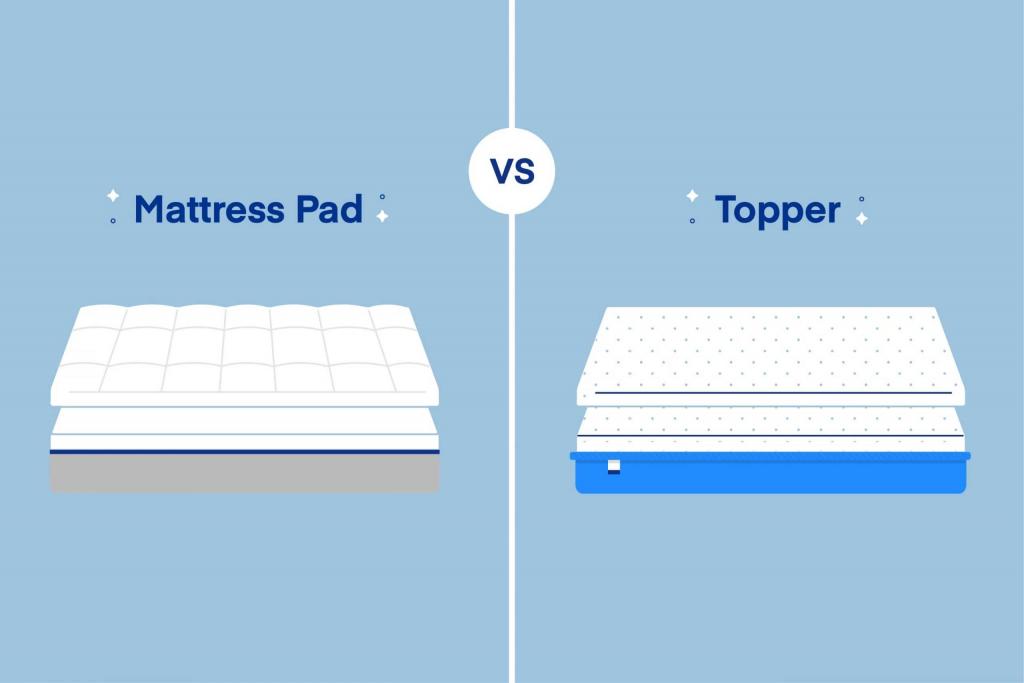
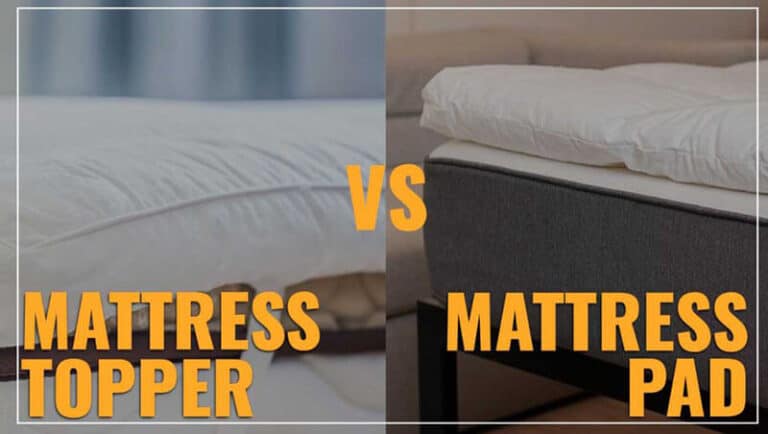


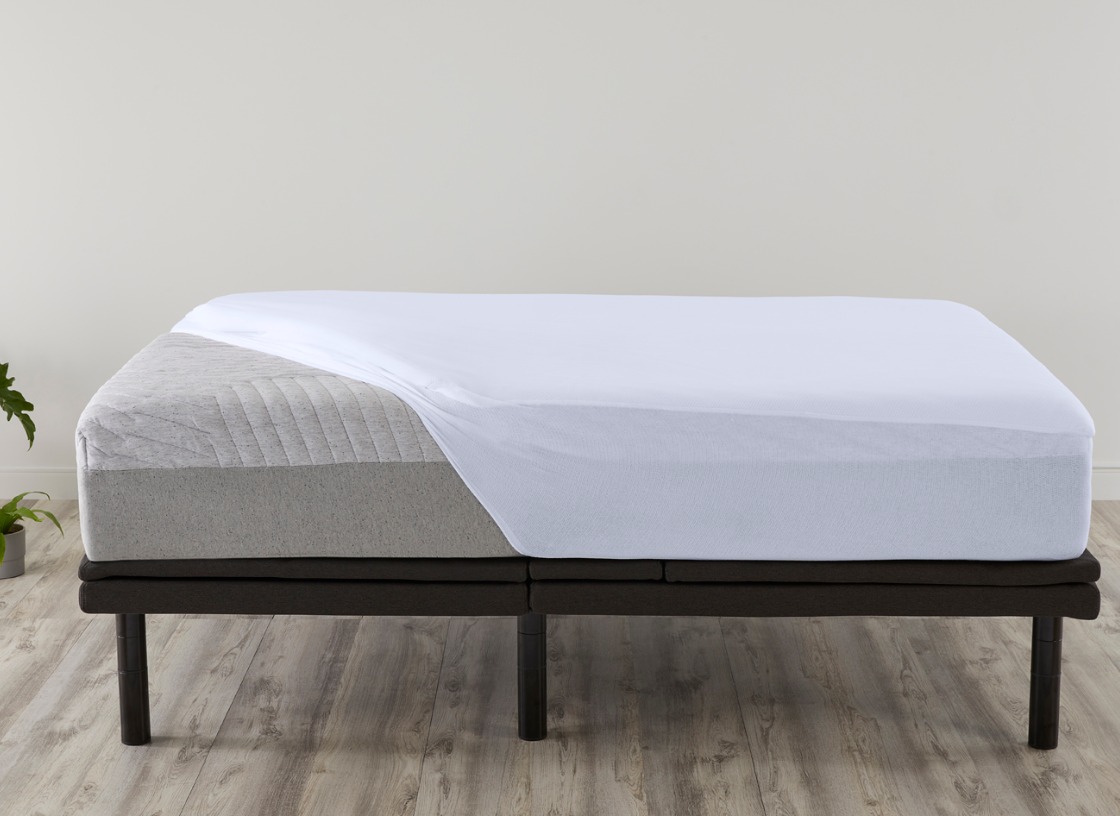

:quality(70)/cloudfront-us-east-1.images.arcpublishing.com/tronc/CYWKPHNXI4PVKXJ5JWVFFCX6MY.png)


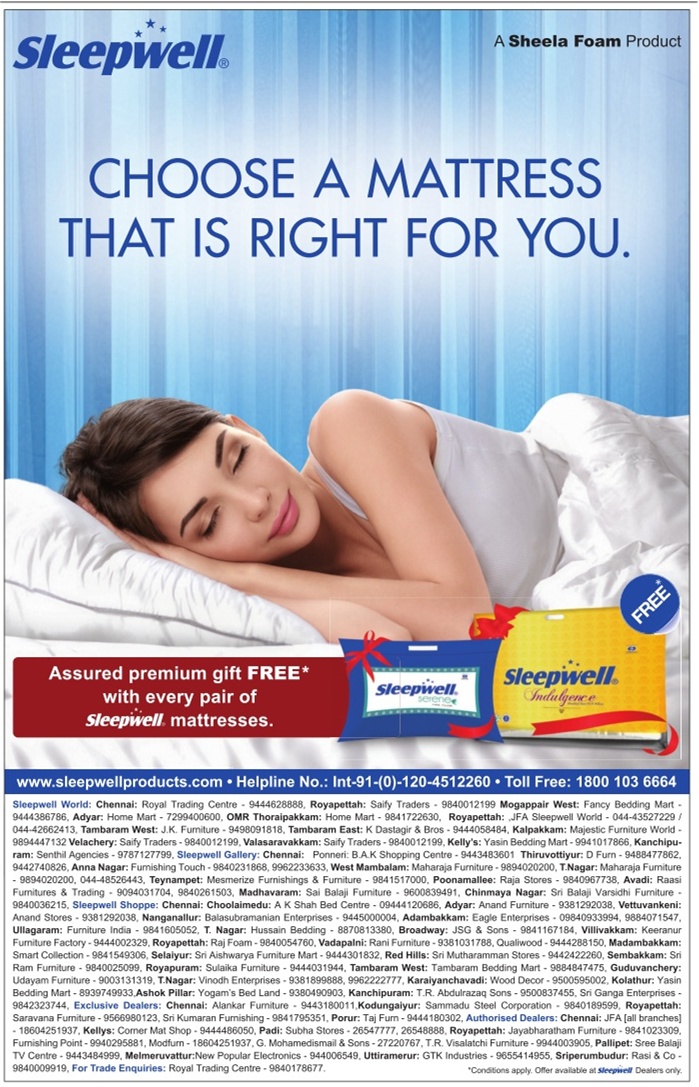
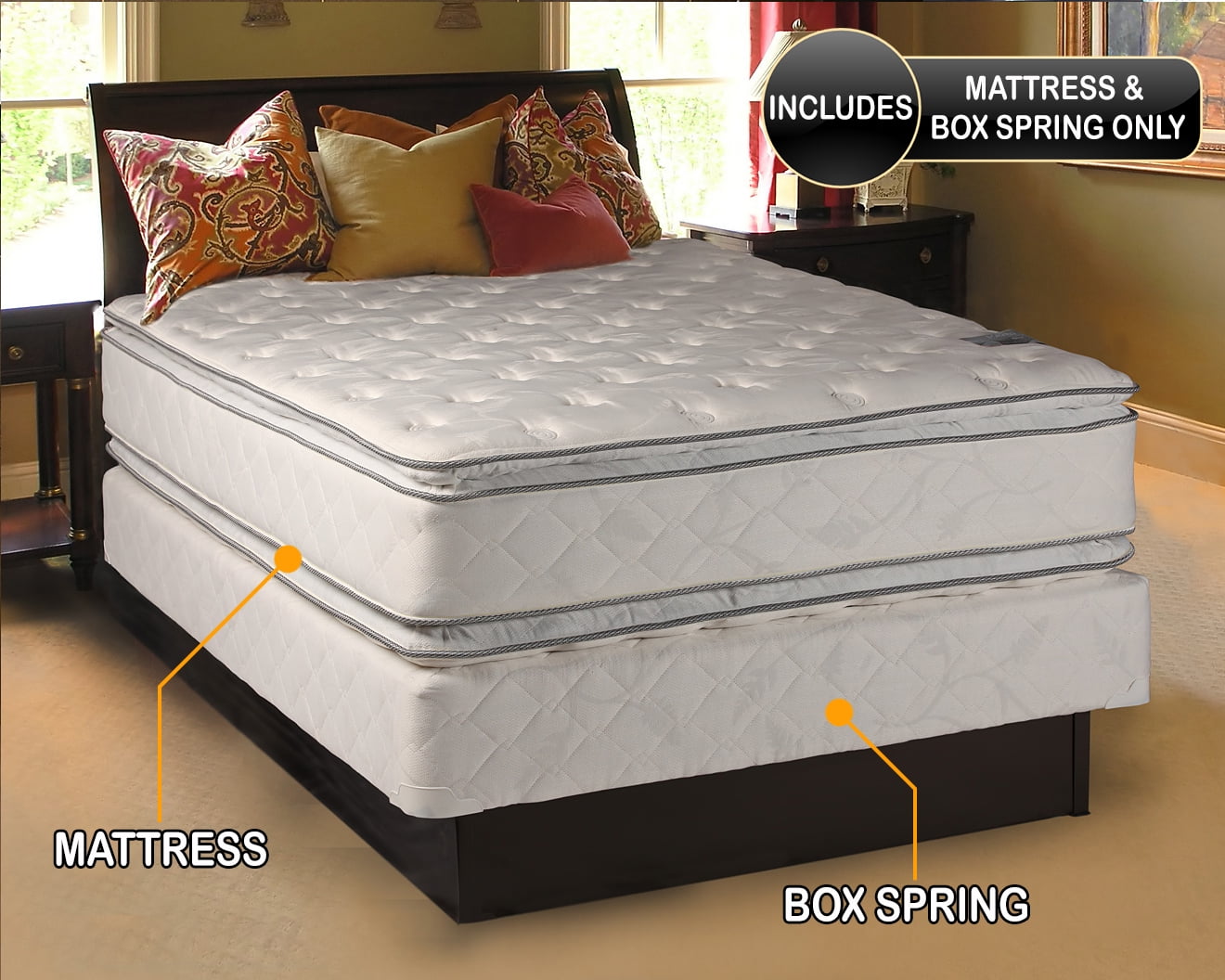
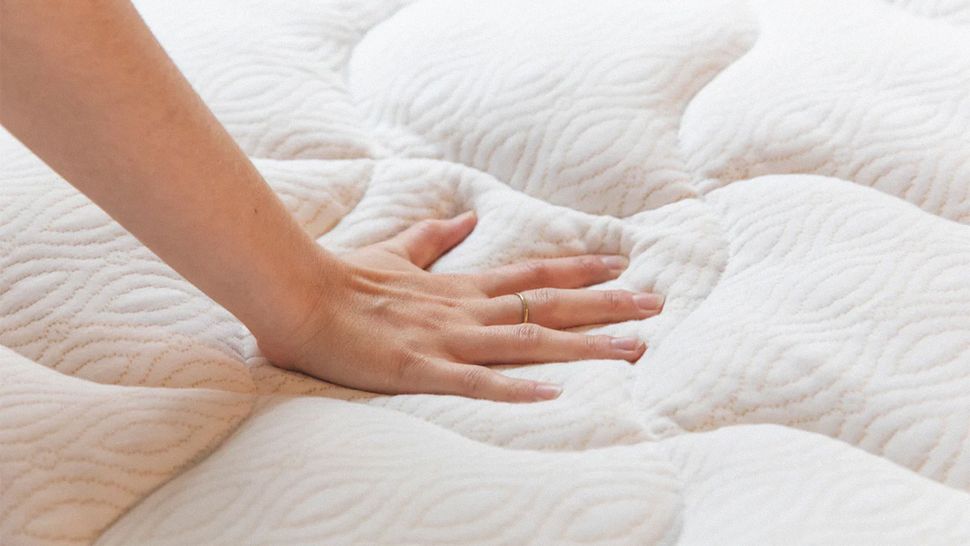

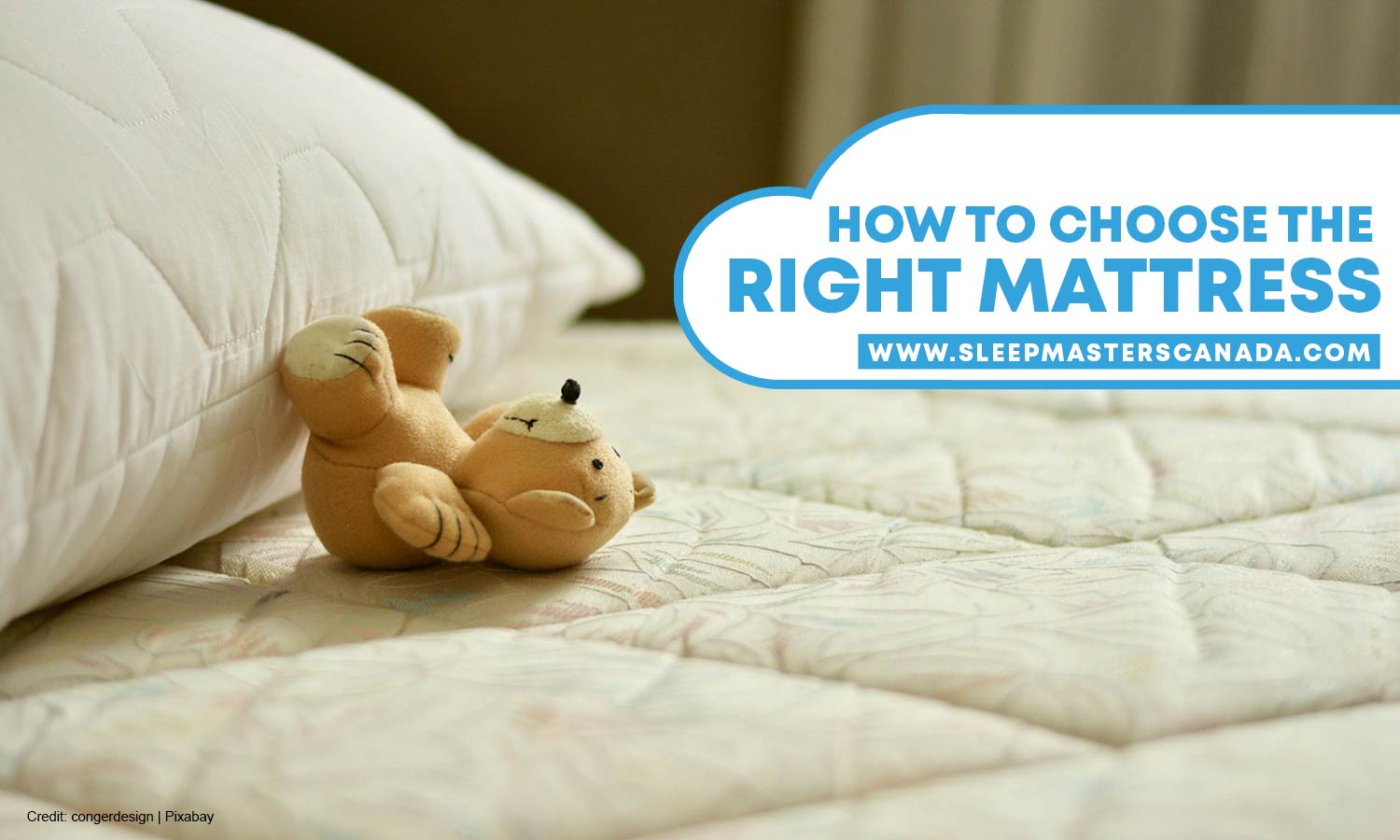
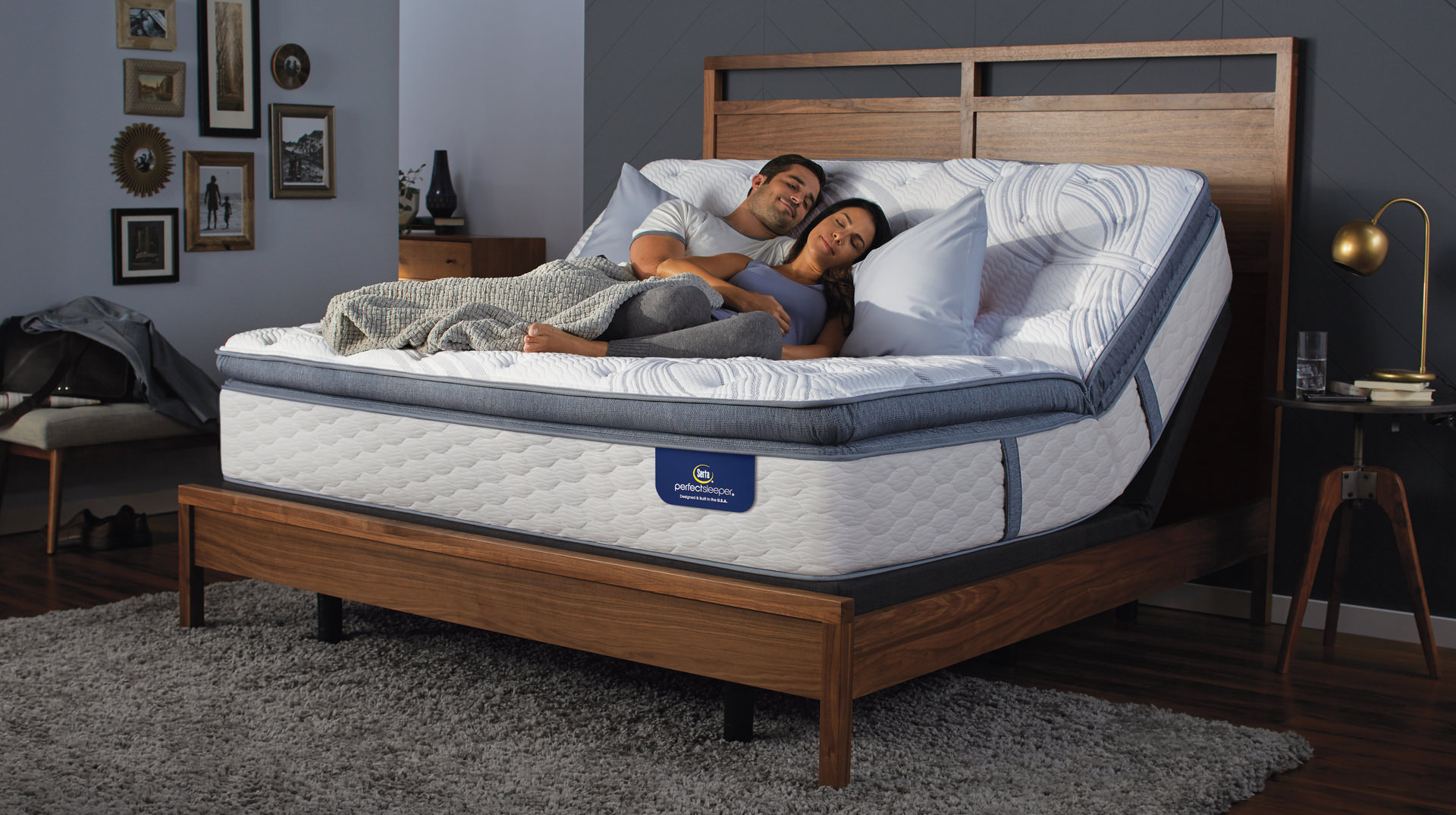
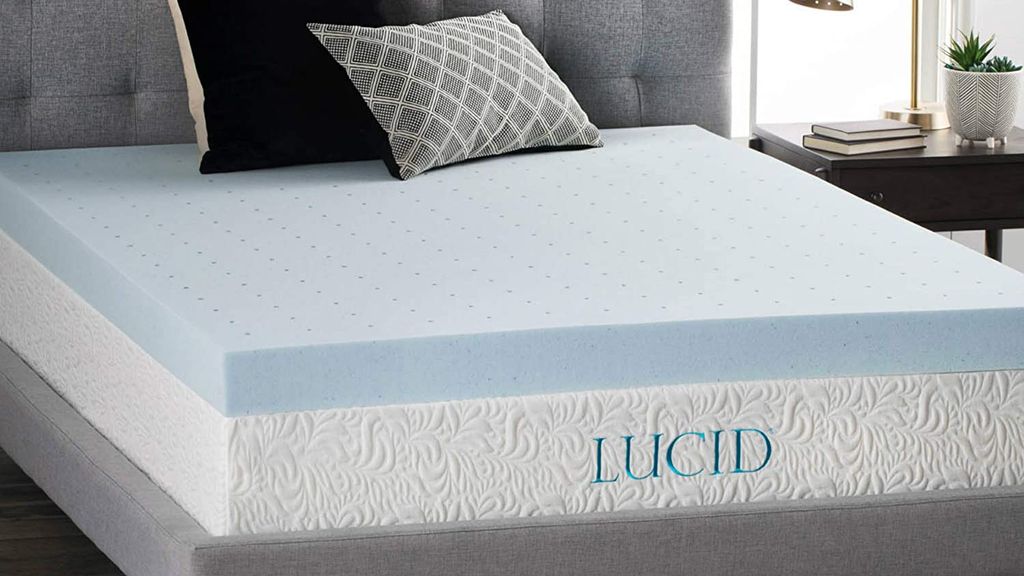






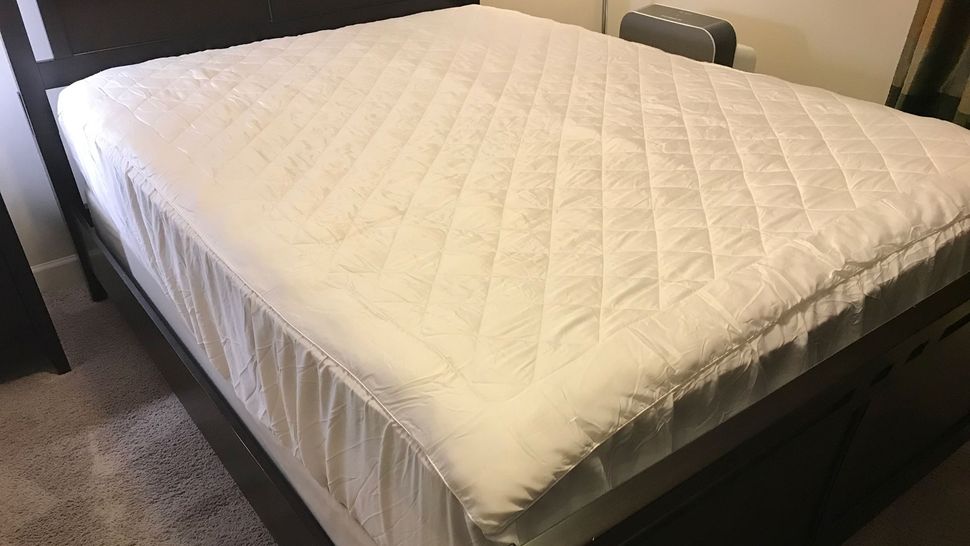



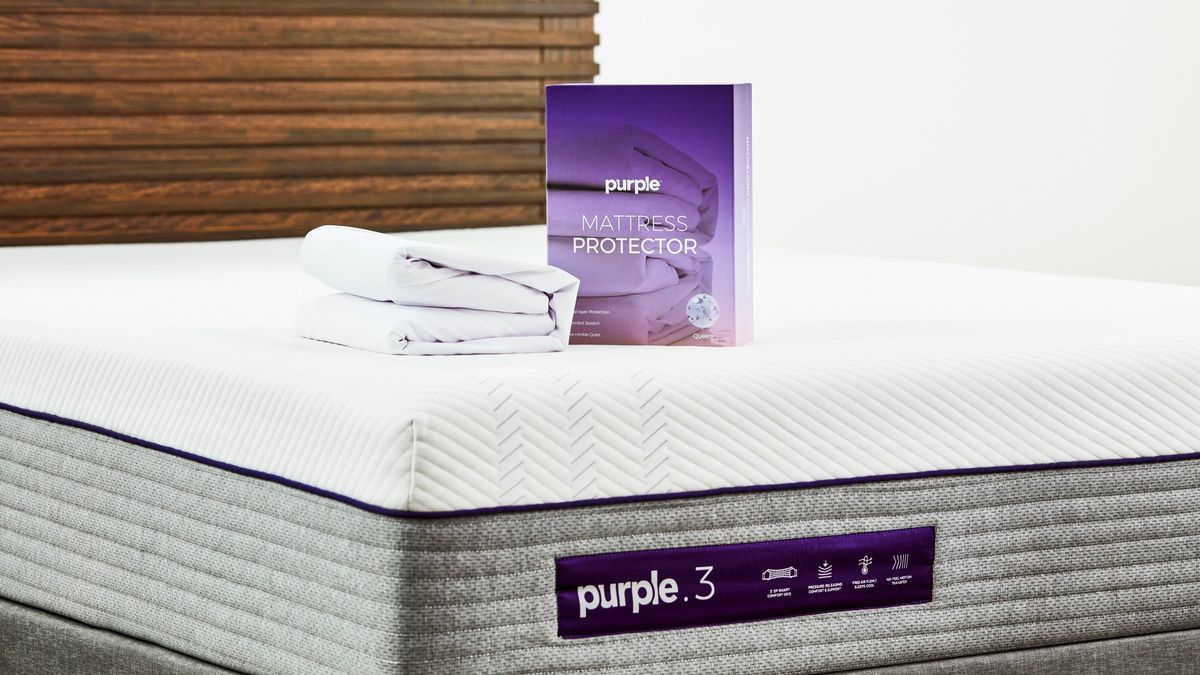



:max_bytes(150000):strip_icc()/_hero_4109254-feathertop-5c7d415346e0fb0001a5f085.jpg)
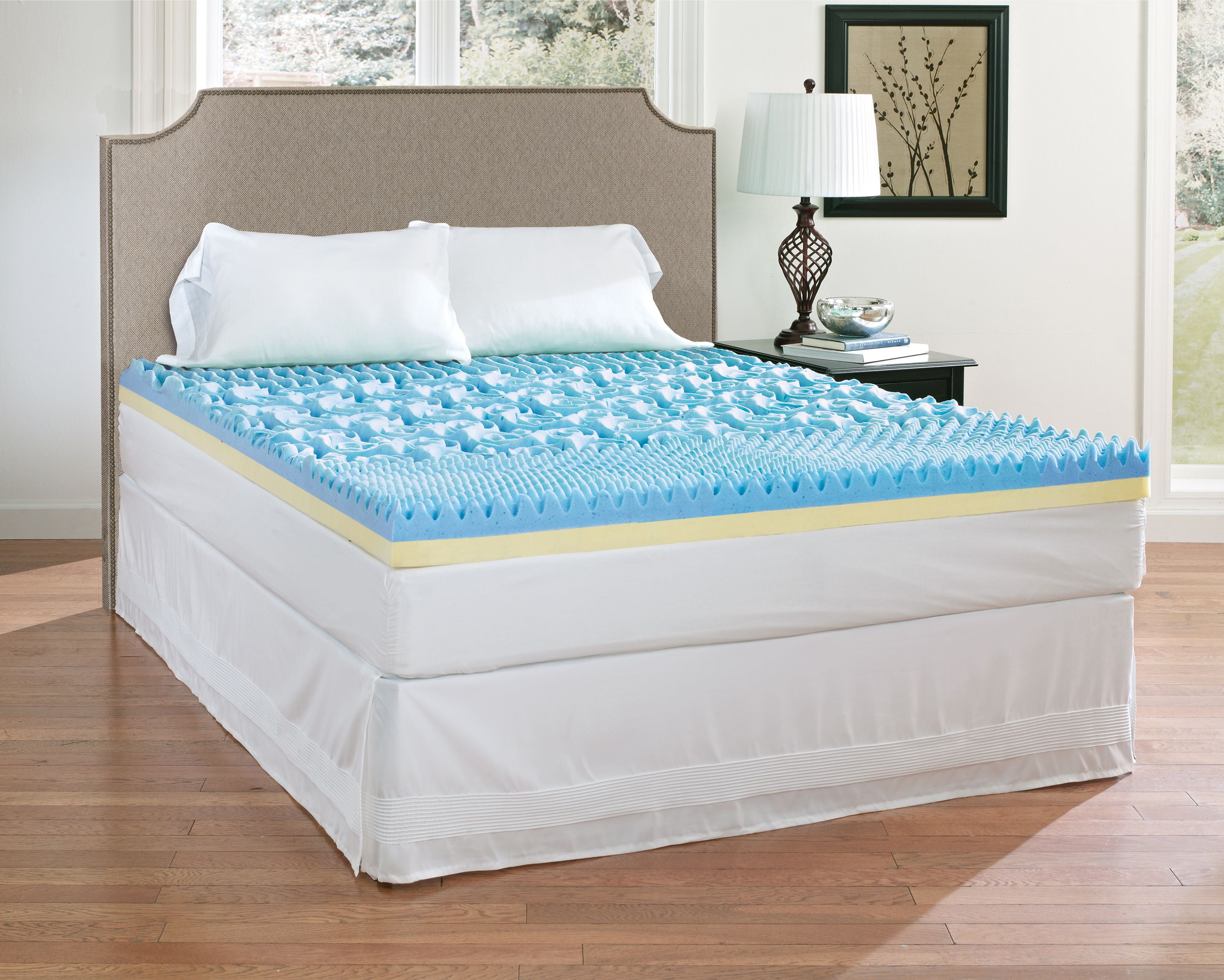
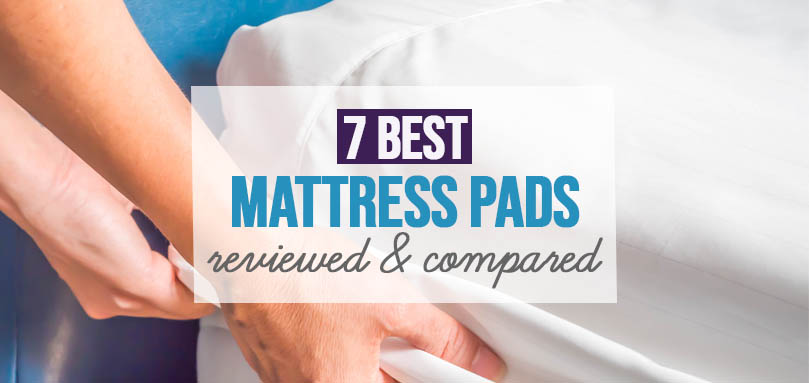




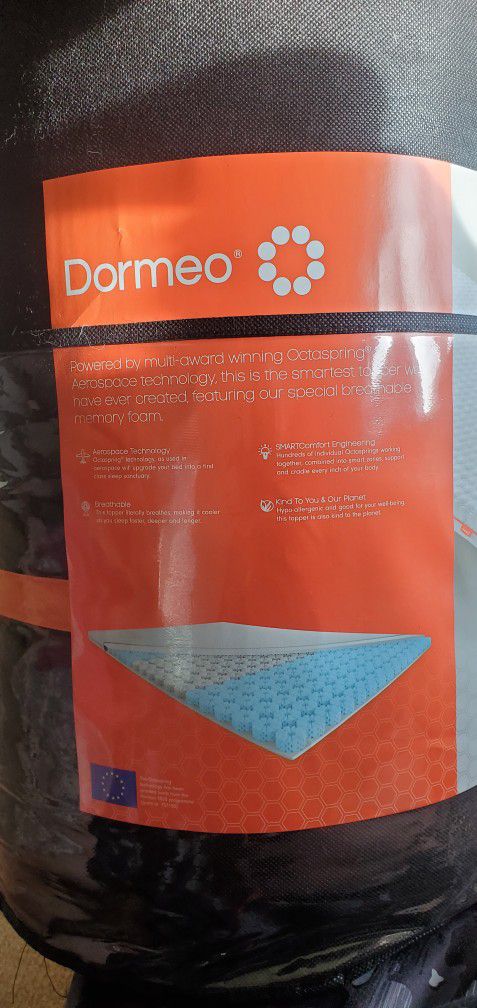



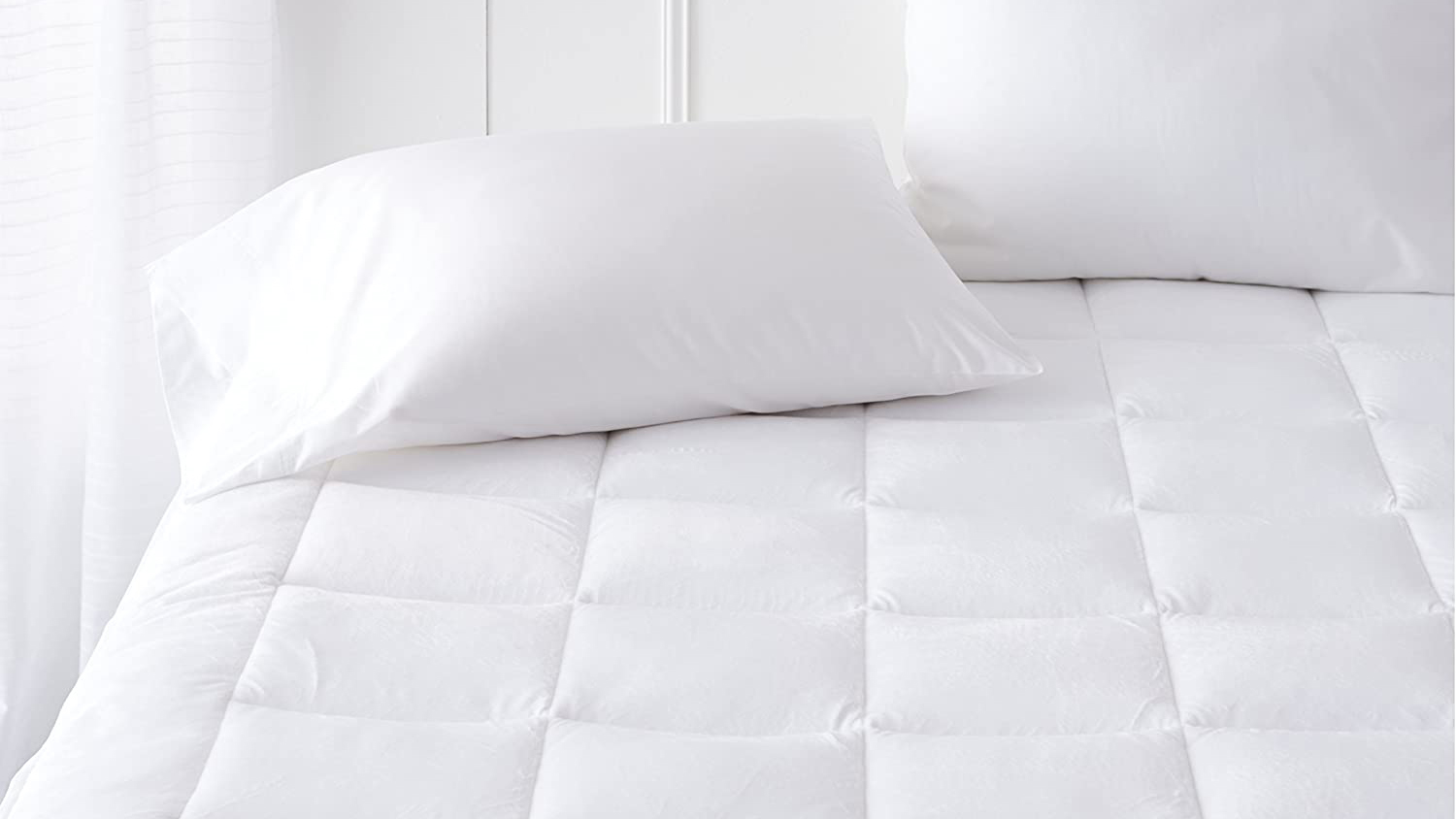
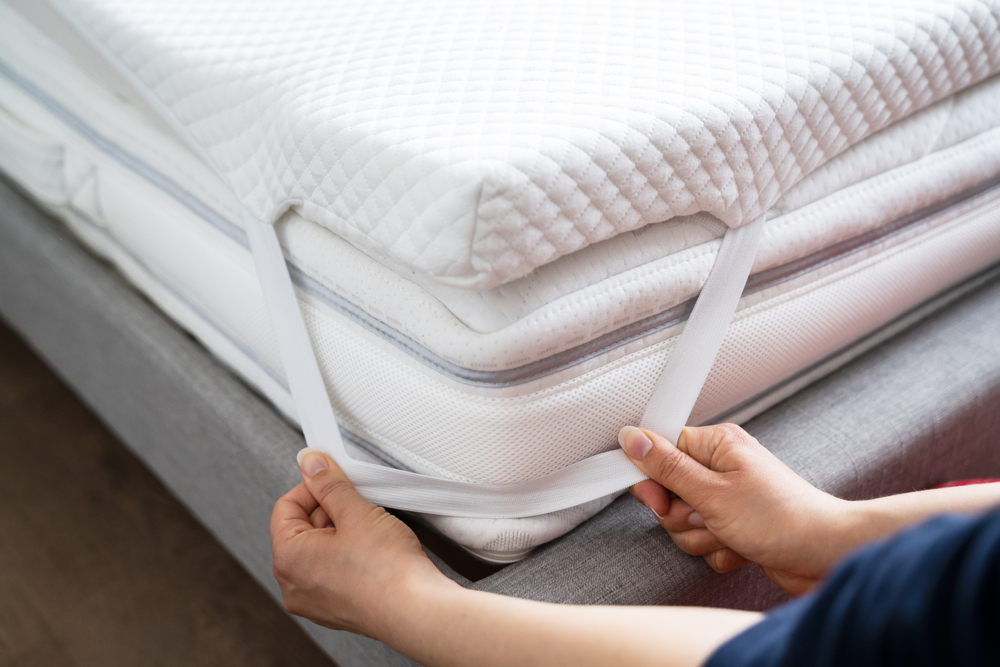

:quality(70)/cloudfront-us-east-1.images.arcpublishing.com/tronc/522O3BVCAORLOVJR3IKZPEO35M.jpg)
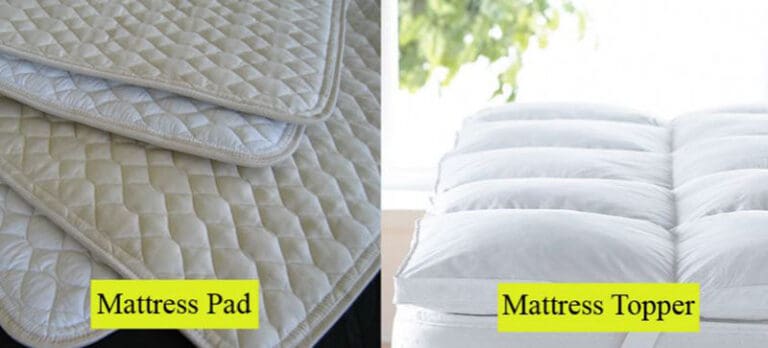














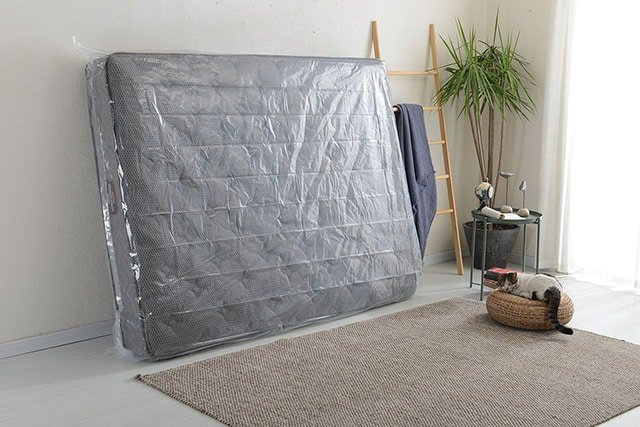




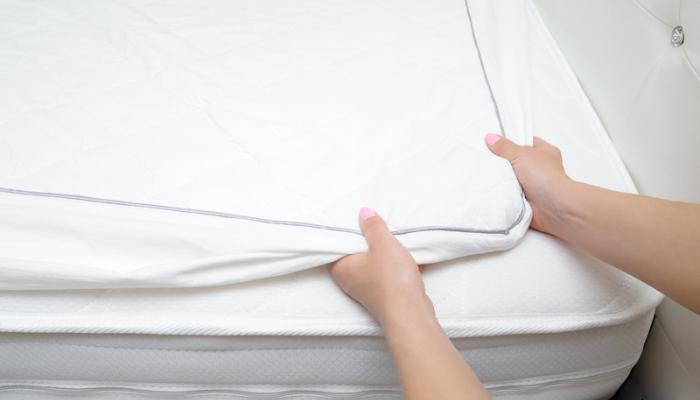
:max_bytes(150000):strip_icc()/HypoallergenicQuiltedStretch-to-FitMattressPadByHannaKay10YearWarranty-ClyneCollectionQueen-590cd5ba3df78c92835bb144.jpg)
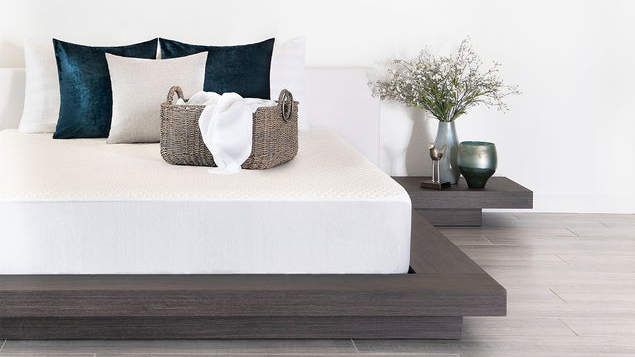


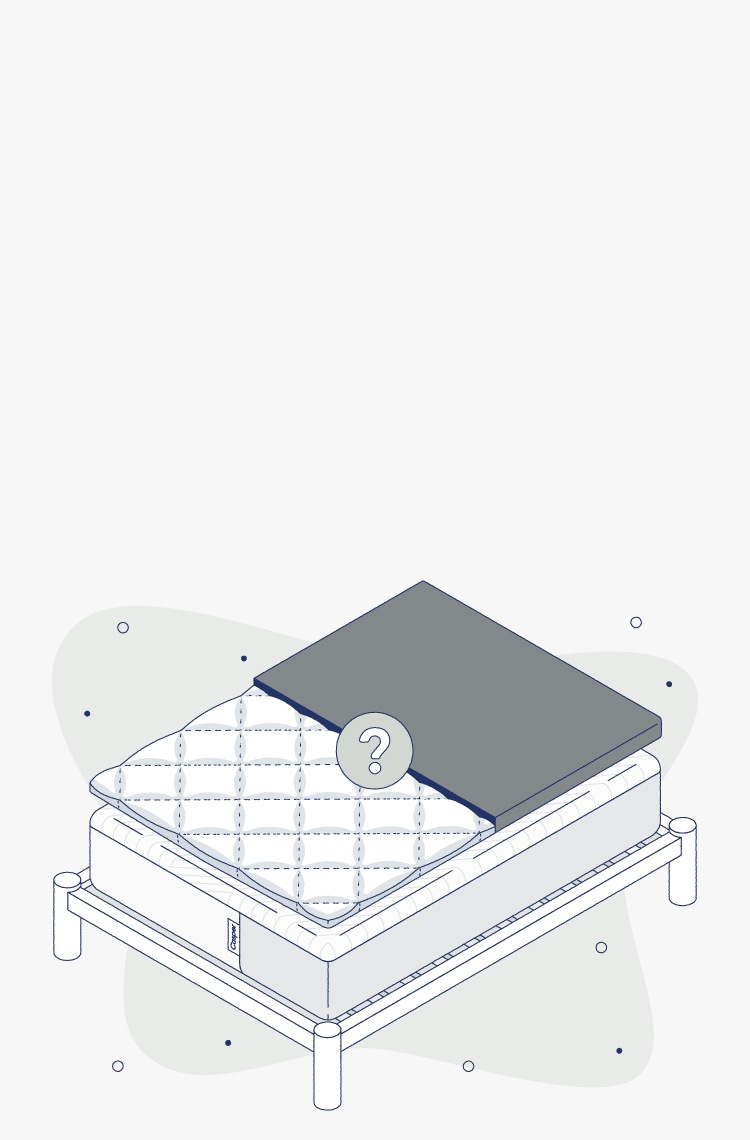



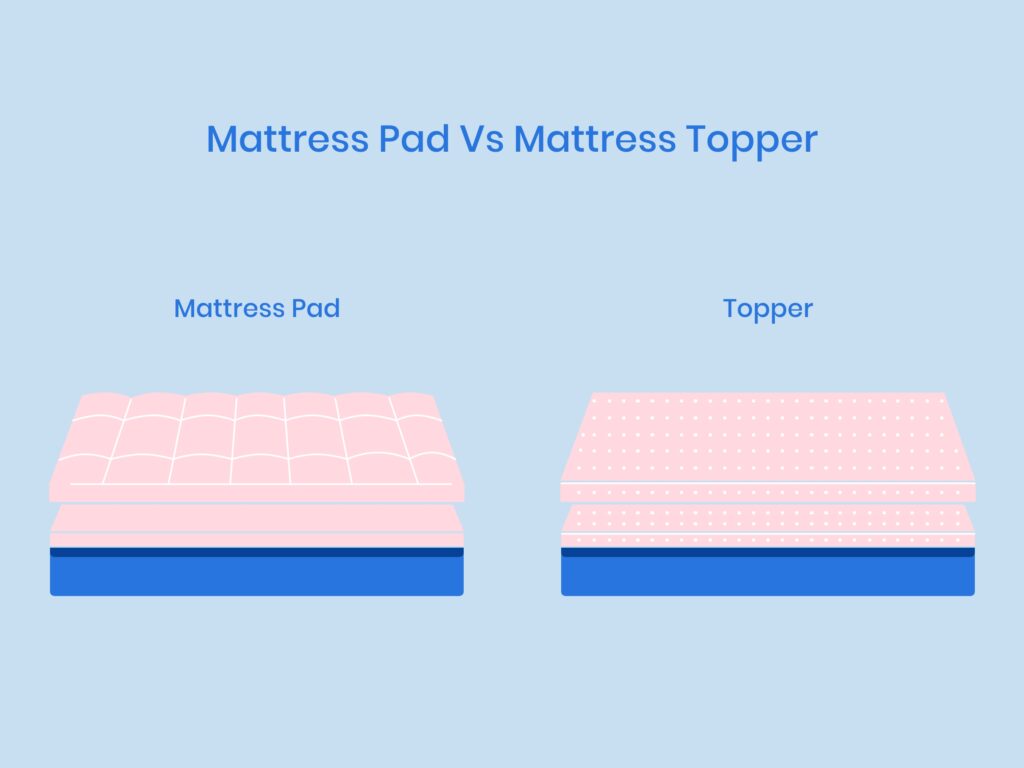



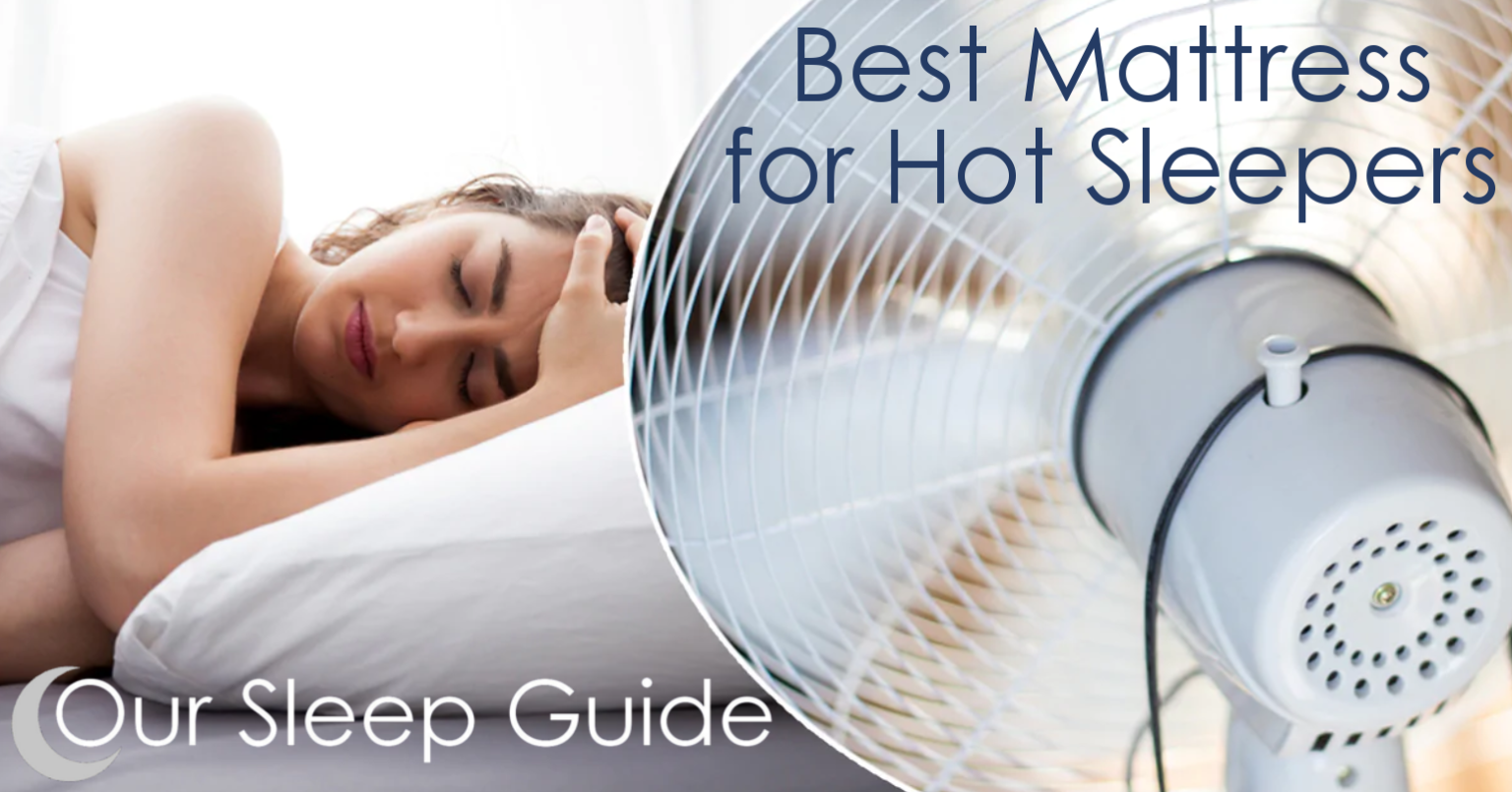

:max_bytes(150000):strip_icc()/SleeponLatex-b287d38f89374e4685ab0522b2fe1929.jpeg)
